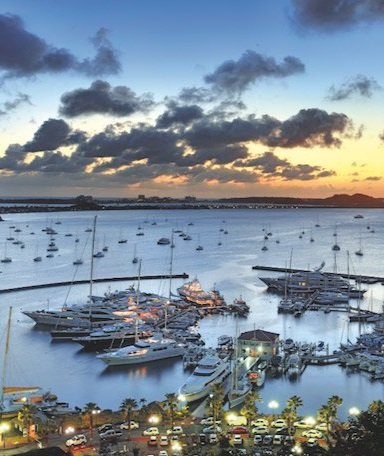Saint Martin Overview
Island History
Although sighted by Christopher Columbus in 1493 and claimed for Spain, it was the Dutch who occupied the island in 1631 to exploit the salt deposits discovered there.
The Spanish retook the island in 1633, but continued to be harassed by the Dutch. Eventually Spain relinquished Saint Martin to both the French and Dutch, who divided it between themselves in 1648. Friction between the two sides caused the border to frequently fluctuate over the next two centuries, with the French eventually holding the greater portion of the island (about 61%). The cultivation of sugar cane introduced African slavery to the island in the late 18th century; the practice was not abolished until 1848. The island became a free port in 1939; the tourism industry was dramatically expanded during the 1970s and 1980s. In 2003, the populace of Saint Martin voted to secede from Guadeloupe and in 2007, the northern portion of the island became a French overseas collectivity. In 2010, the southern Dutch portion of the island became the independent nation of Sint Maarten within the Kingdom of the Netherlands. On 6 September 2017, Hurricane Irma passed over the island of Saint Martin causing extensive damage to roads, communications, electrical power, and housing; the UN estimated that 90% of the buildings were damaged or destroyed. The World Factbook
Island Economy
The economy of Saint Martin centers on tourism with 85% of the labor force engaged in this sector. Over one million visitors come to the island each year with most arriving through the Princess Juliana International Airport in Sint Maarten. The financial sector is also important to Saint Martin’s economy as it facilitates financial mediation for its thriving tourism sector. No significant agriculture and limited local fishing means that almost all food must be imported. Energy resources and manufactured goods are also imported, primarily from Mexico and the US. Saint Martin is reported to have one of the highest per capita incomes in the Caribbean. In September 2017, Hurricane Irma destroyed 90% of the French side of Saint Martin. Along the coastline of Marigot, the nerve center of the economy, the storm wiped out restaurants, shops, banks and open air markets impacting more than 36,000 inhabitants. The World Factbook
Saint Martin Weather
Located in the tropics, and close to the equator, St. Martin experiences little variation in temperature throughout the year. Temperatures range from 75° in the winter to 95° in the summer. Humidity also increases during the summer months. Trade winds, along with air conditioning, keep everyone comfortable. High-season for tourists is November through May.
Island Activites
Looking across Baie Nettle from the property are offsite views of the lively capital city of Marigot. Just 10 minutes from the property, Marigot features duty-free shopping at numerous boutiques and high-end jewelry stores. Excellent French restaurants, cafes, and bars are scattered alongside cobblestone streets. Unlike other Caribbean islands there is a vibrant nightlife and no shortage of “things-to-do” on St. Martin.
The island is known for its beautiful beaches. Relaxed sunbathing, sometimes with nothing more to wear than SPF50 sunscreen, is popular on the French side. Orient Bay is a well-known and often times crowded walking beach, popular for people-watching from the many “beach club” bars fronting the bay. Watersports including sailing, kite surfing, snorkeling, paddle boards, jet skis, and scuba diving are favorite tourist pastimes.
Yacht watching is another island preoccupation. A flotilla of mega yachts cruise Caribbean waters, and frequently dock at Marigot and Simpson Bay Lagoon marinas. The protected geography of Simpson Bay provides a safe harbor from storms, as well as yacht provisioning and maintenance services with dry dock facilities to 360’ for mega yachts. The close proximity of Princess Juliana, an international Caribbean hub airport, facilitates easy access for owners and their yacht charter clients. St. Martin is known as an exclusive playground for the rich and famous; celebrity sightings are not uncommon.


